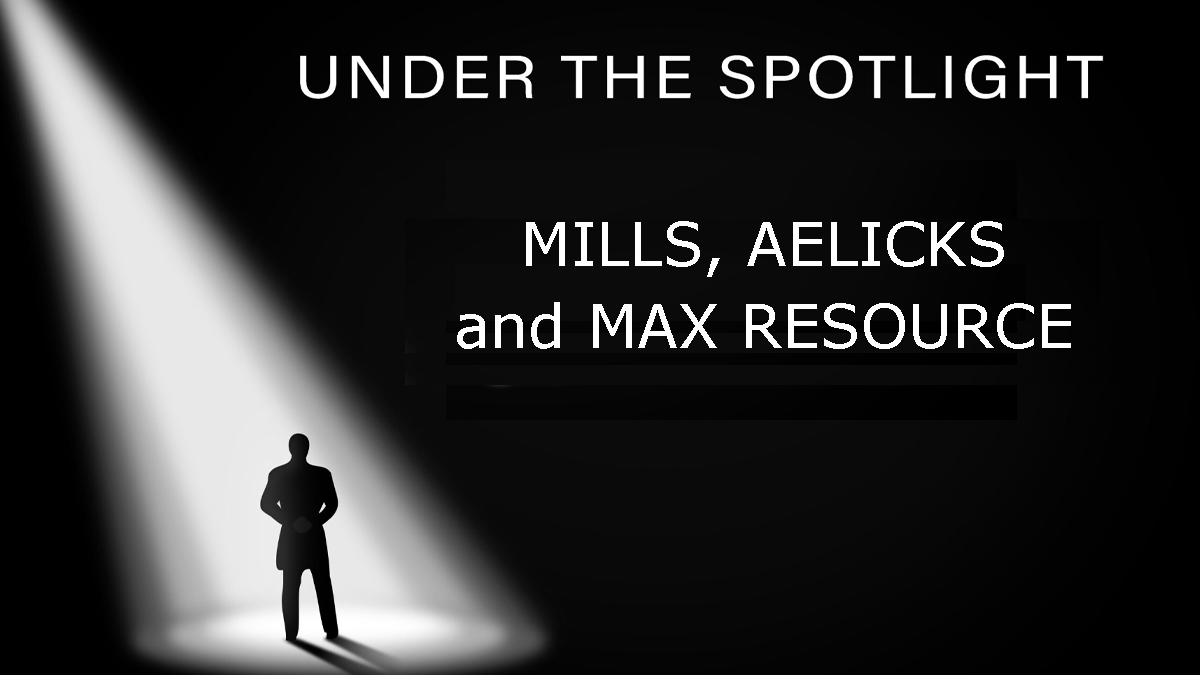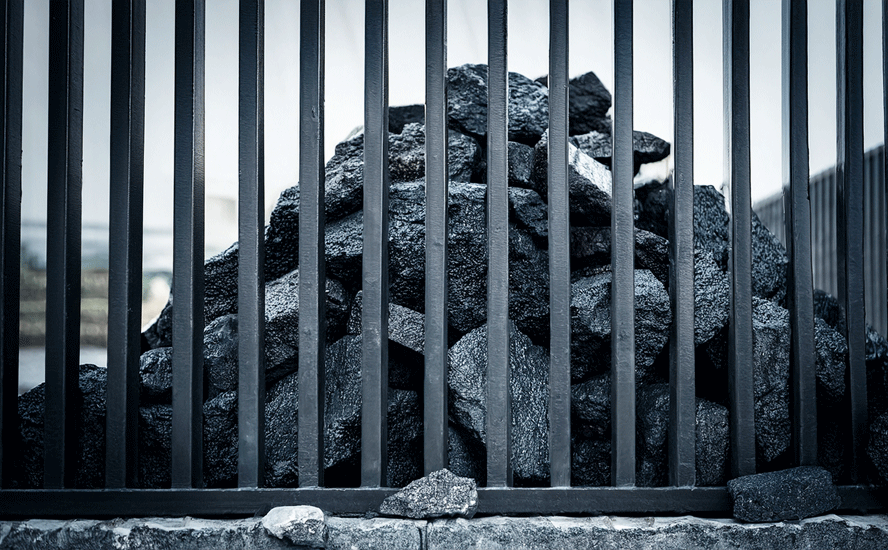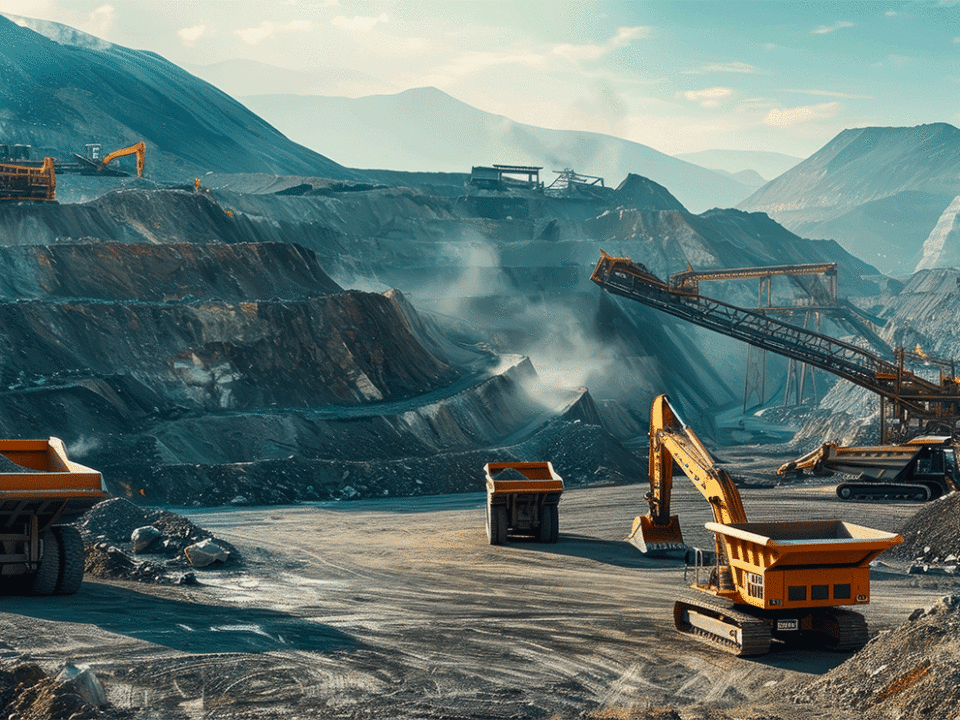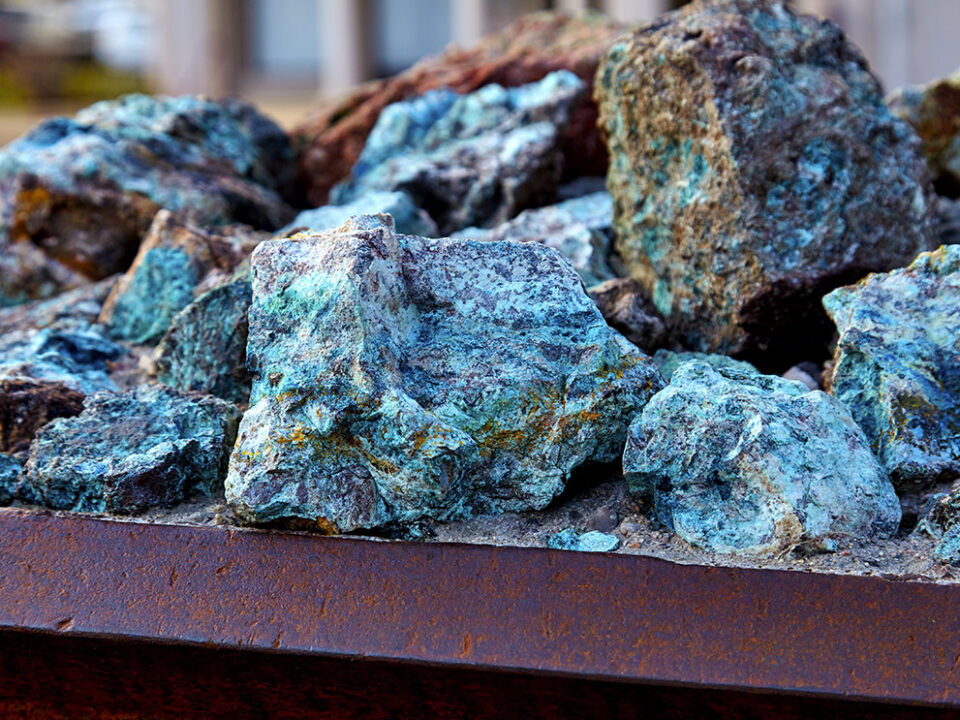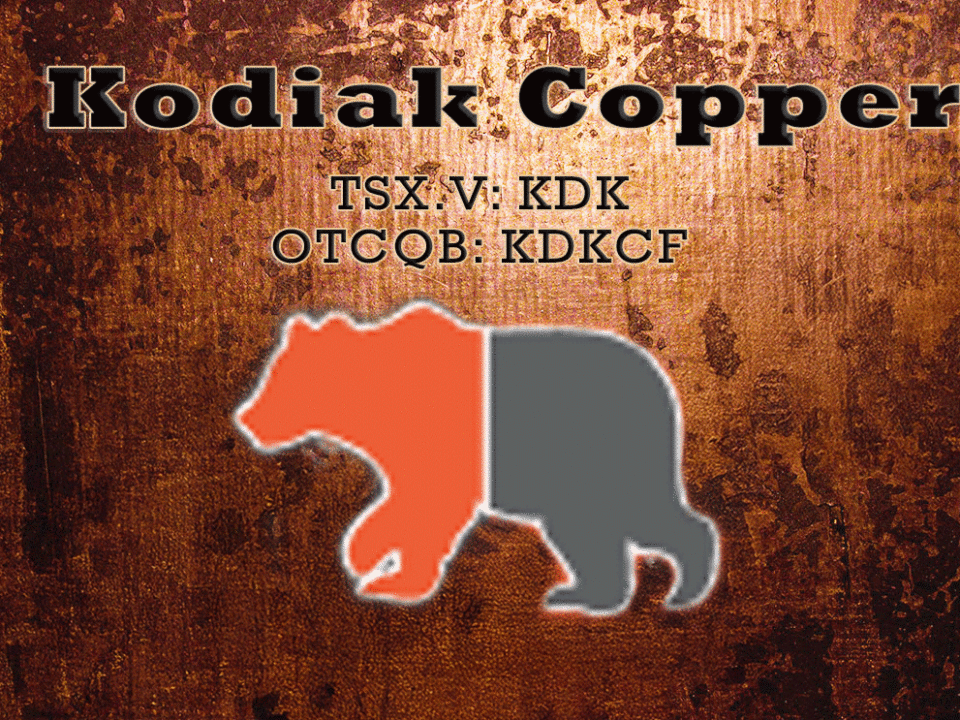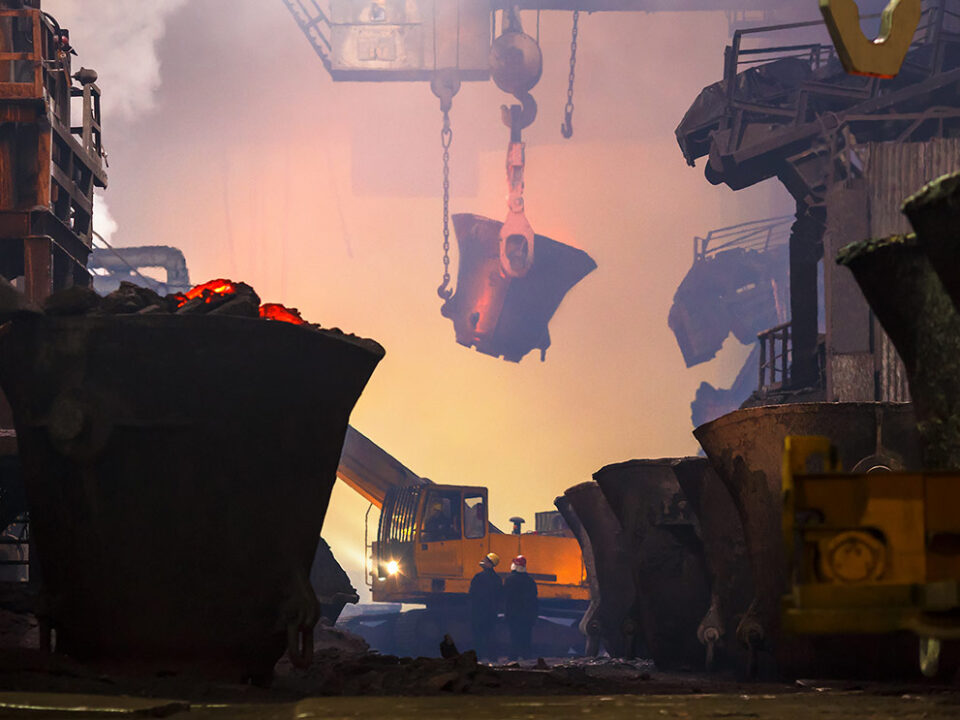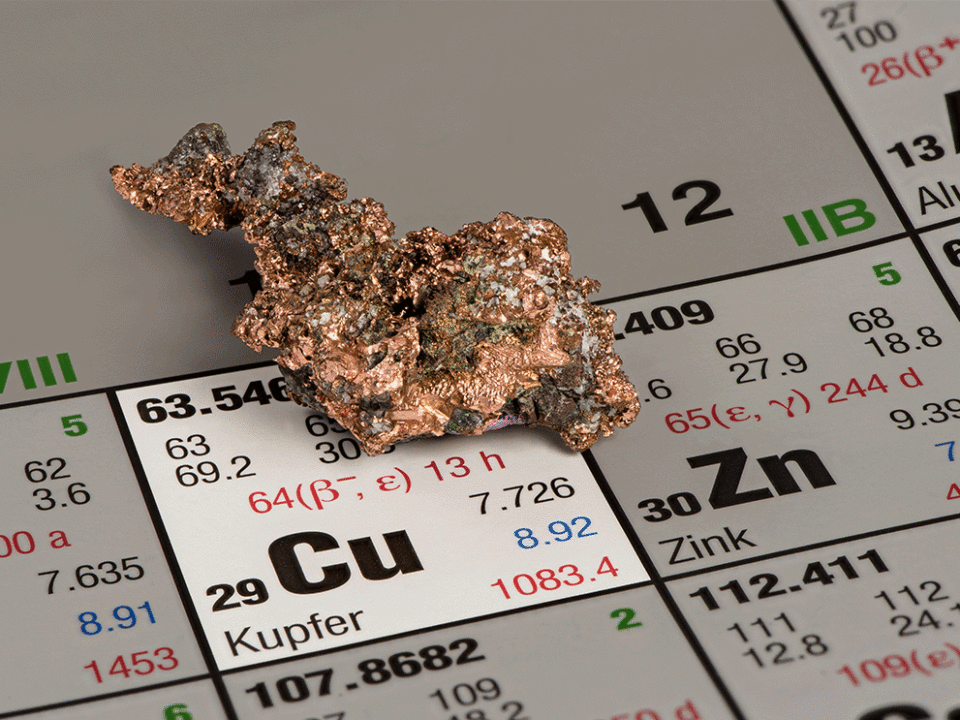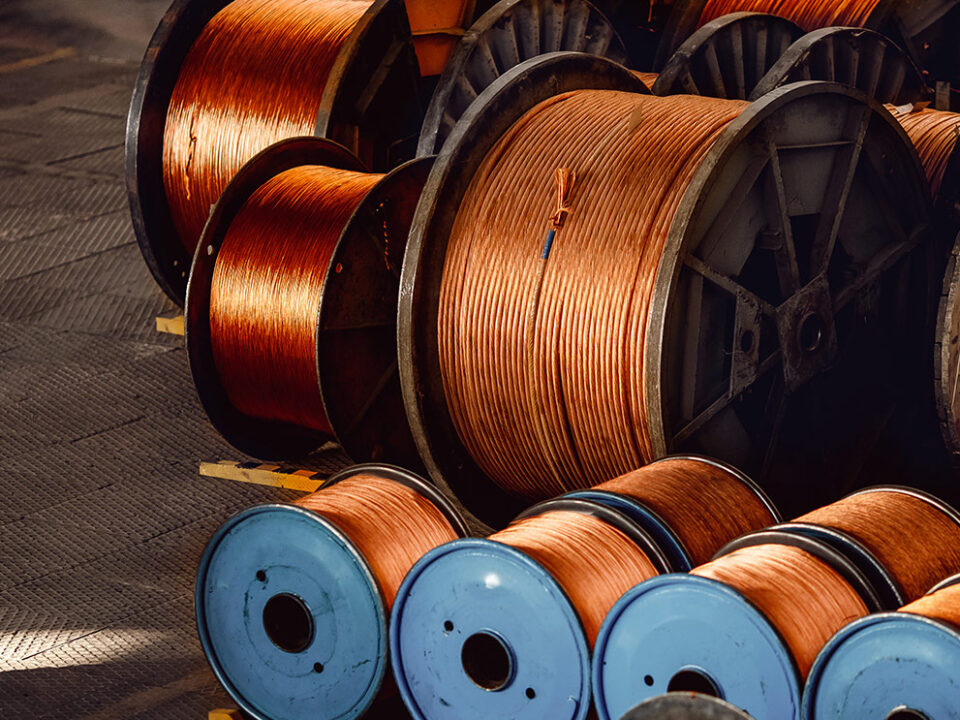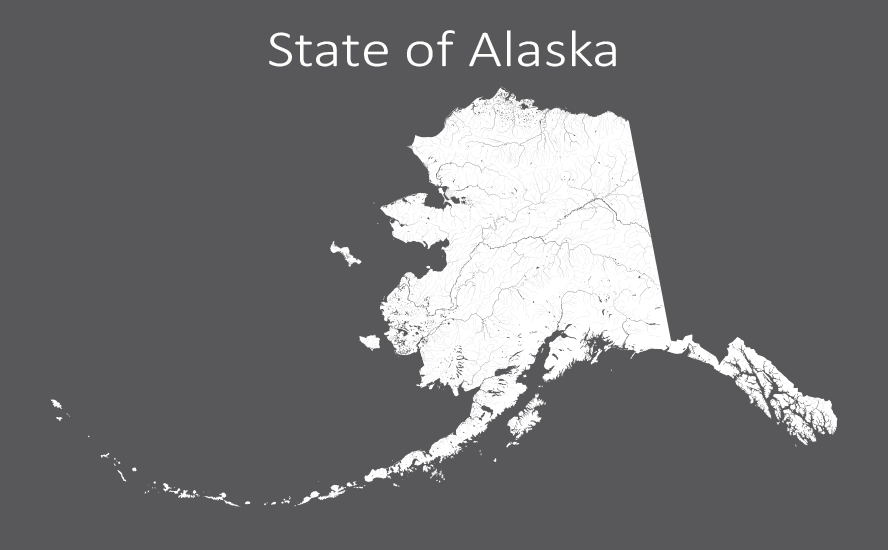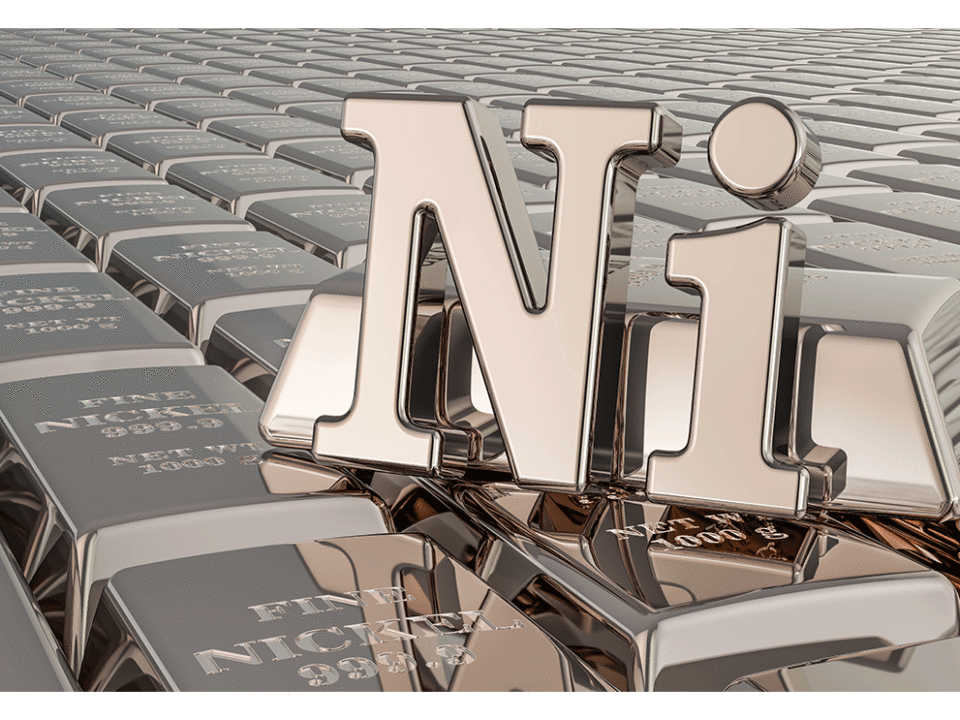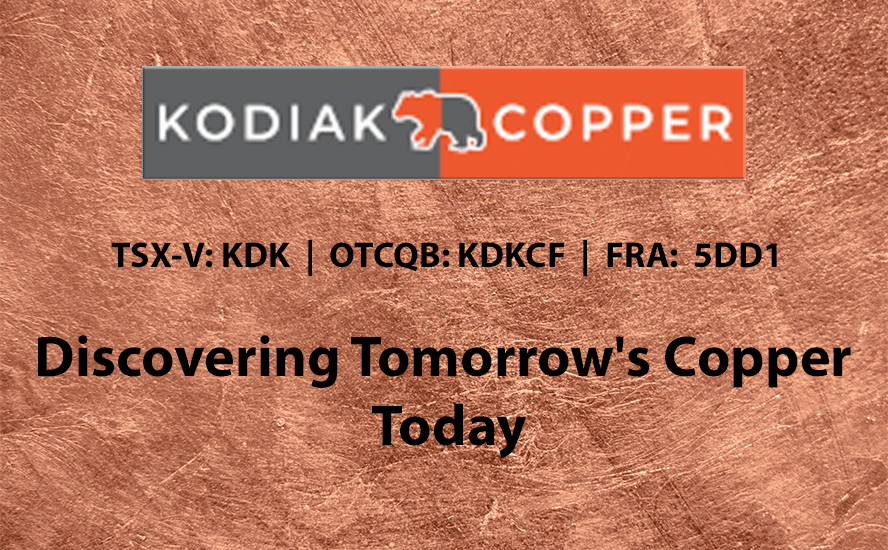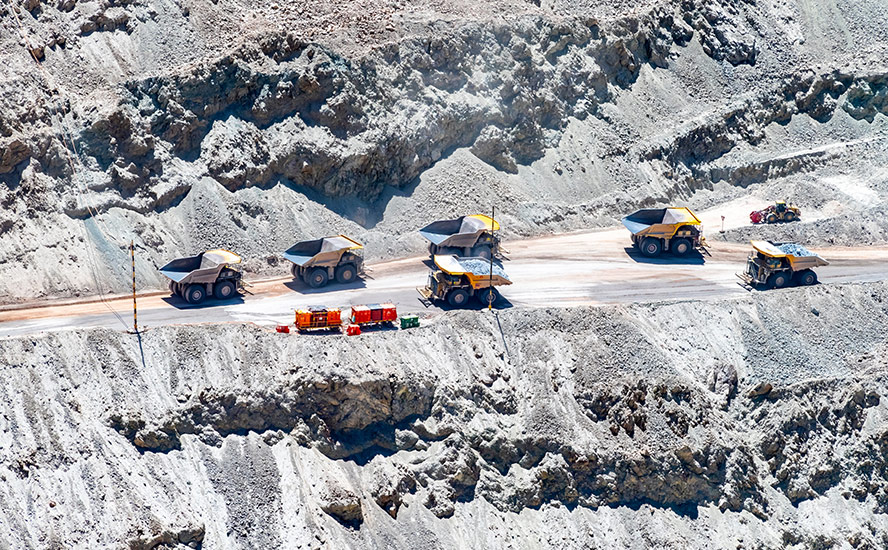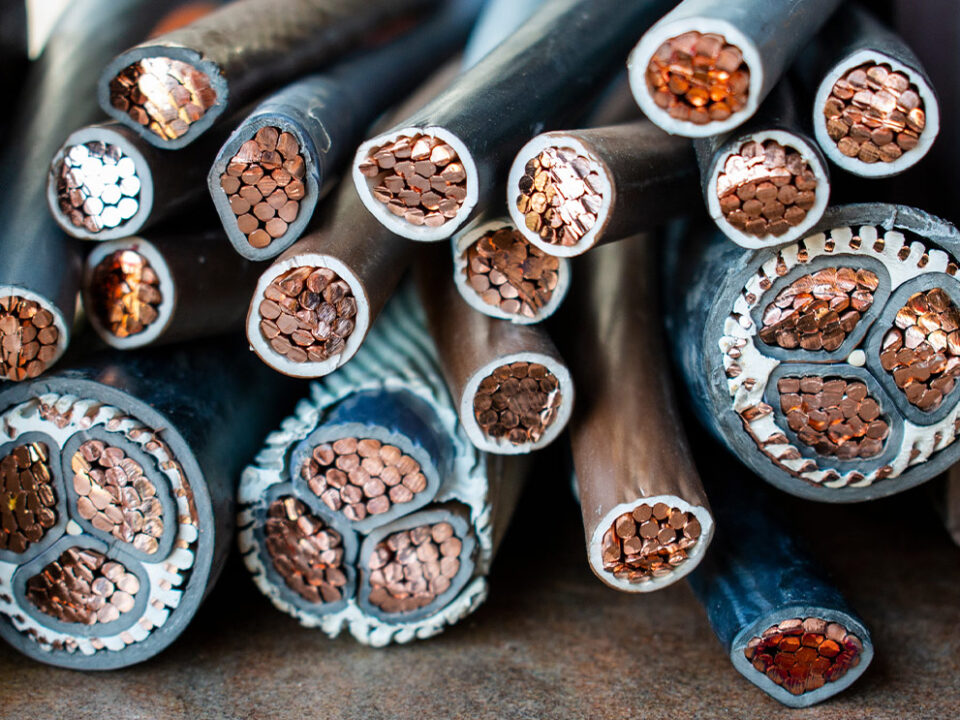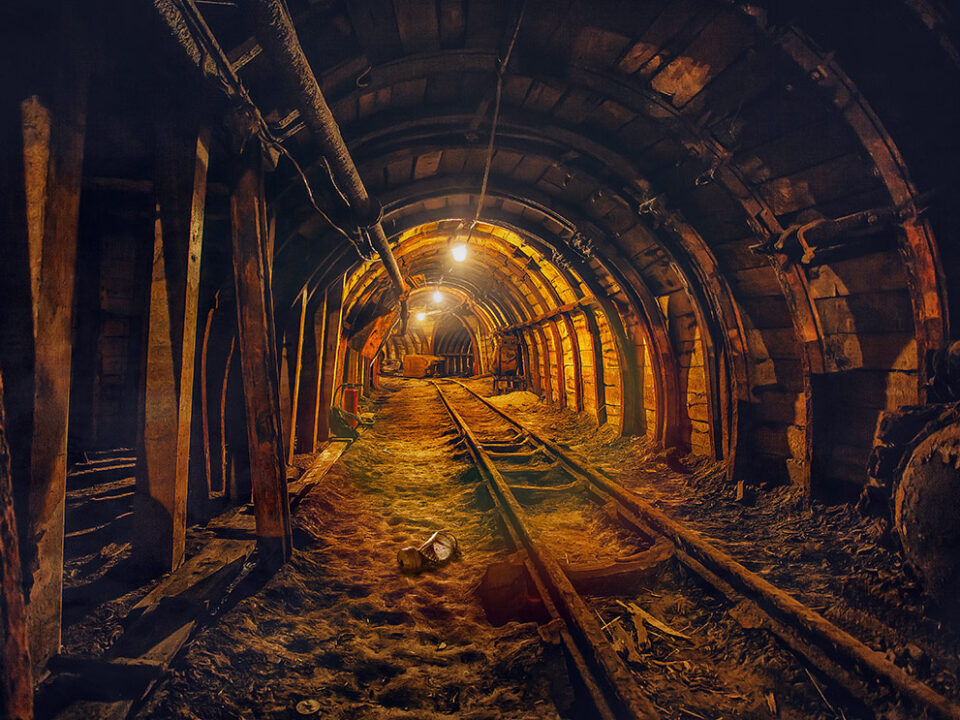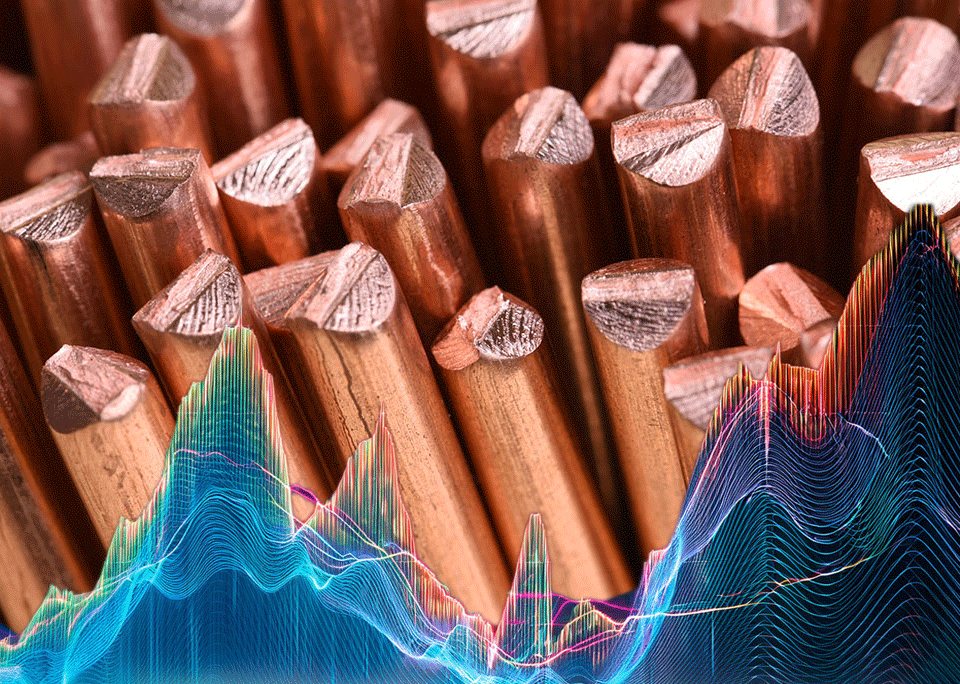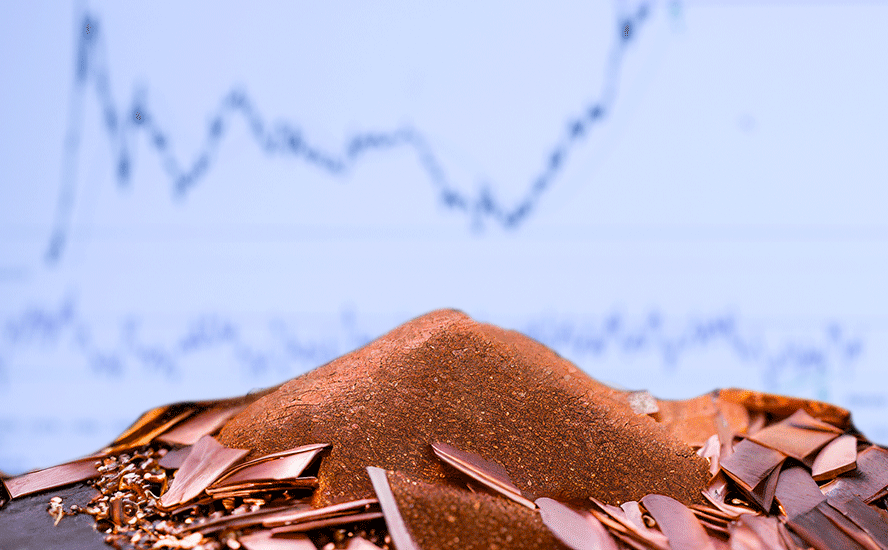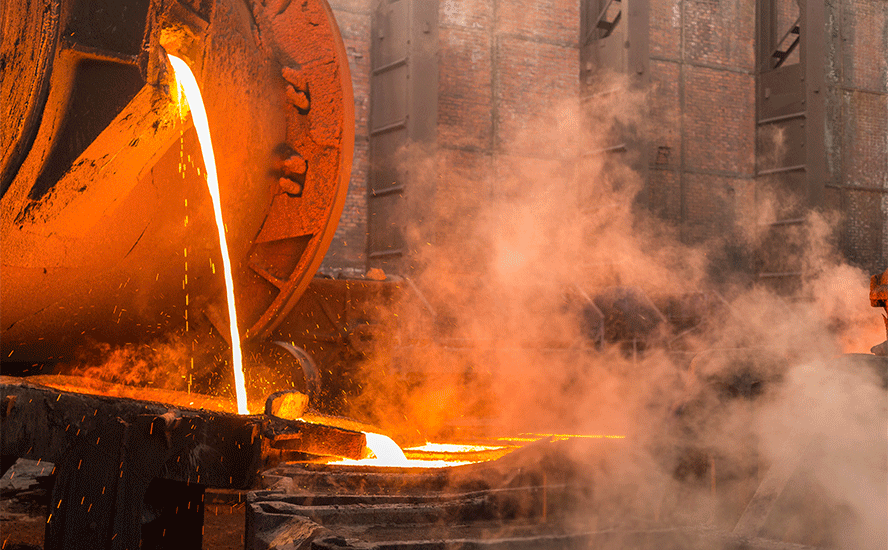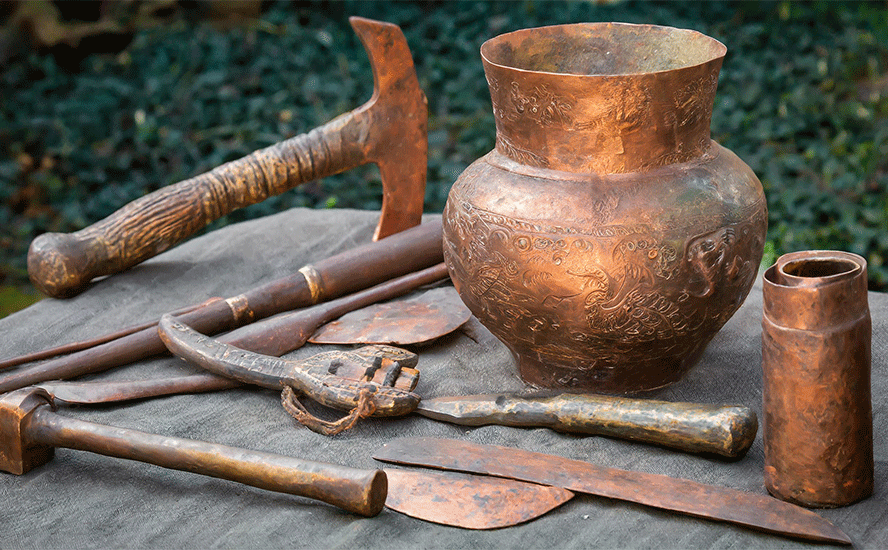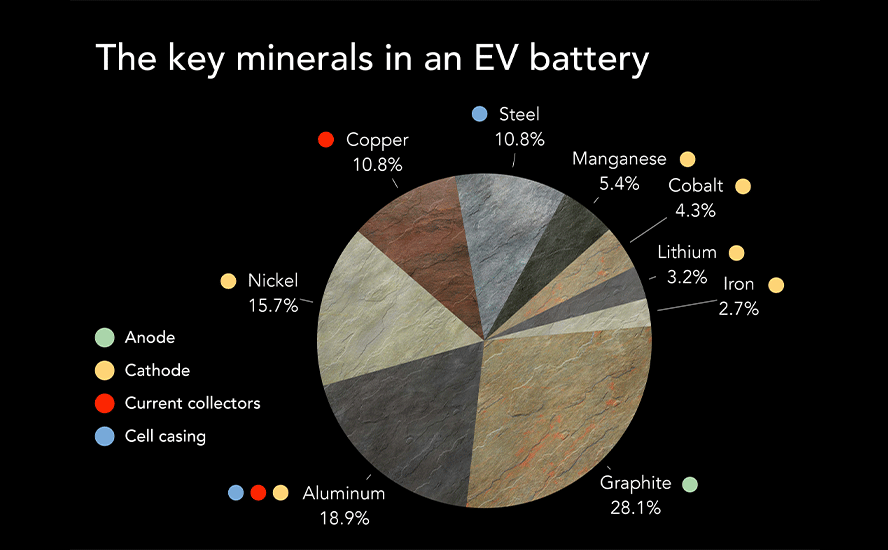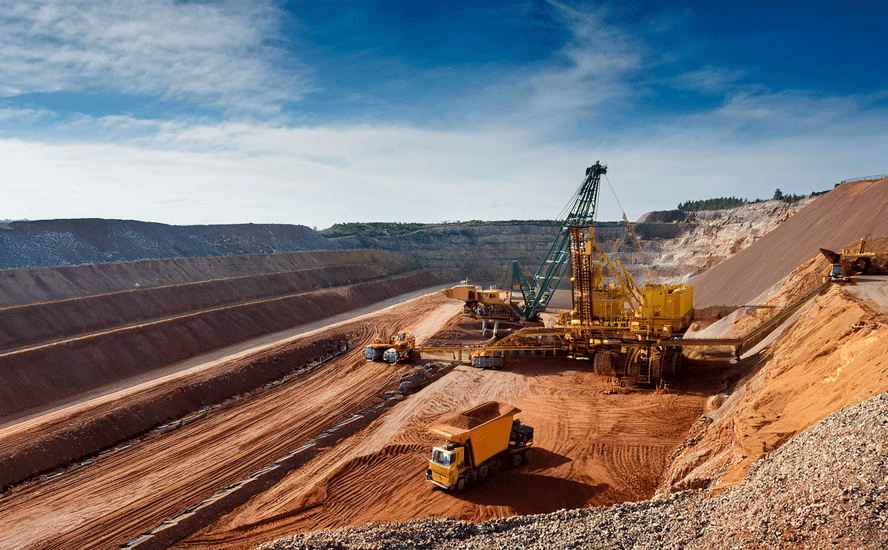UNDER THE SPOTLIGHT; MILLS, AELICKS and MAX RESOURCE
2022.03.07
Rick Mills: Joining me today is Brad Aelicks. Brad is a geologist, founded B&D Capital and now owns and runs Pyfera Capital.
Hi Brad, how did you find Max Resources (TSX.V:MXR) and what did you think when you first got involved and started looking at it?
Brad Aelicks: It was first introduced to me by you, Rick, at Ahead of the Herd. It’s probably about two and a half years ago, and to be honest in the early stages I didn’t know what to think about it.
But it was an intriguing geological model, and the more details and information that continued to evolve from the company, the geological model which we’ll talk about shortly, it presented itself as one of the best risk-reward situations I’ve seen in the junior mining sector, so I felt there was a good opportunity there to start to participate a little bit, from a risk-reward perspective.
As it turns out it’s evolved quite dramatically over the last two years, and now I’m heavily involved.
RM: When you talk about risk-reward that’s something you’re well qualified to explain given your background, can you tell us a little bit about your thoughts on the risk-reward for Max Resources?
BA: Sure, look I’m a geologist by background, I’ve been around the industry now for way too long, 35-38 years, what I look for in this part of my portfolio is significant leverage to discovery.
It’s a high-risk, high-reward environment, you’re looking for these opportunities that can give you 8-10 times your money. Of course the challenges in the junior side of the market is a lot of times these things don’t work out at all.
So if you’re going to invest in them they better be big stories that when you do get a winner you’re looking at really significant upside.
I like to call it wealth creation, because when you find one of these things, when it’s a penny stock, and it can actually develop a deposit, you can take a ride on these things from a few tens of millions of market cap, to $250 million to a billion dollar market cap. And it doesn’t take many of those in your career to have a pretty phenomenal return on capital.
RM: We’ve had a long association talking and writing for many years, starting in 2003, we’ve had a remarkable run have we not?
BA: You know when you get into a decent market, and you’ve got commodity prices moving in the right direction, the critical part is to have capital available to these companies that they can develop their assets.
As long as the market’s in a position to be paying attention and there’s a fair market to work in, we’ve a pretty good track record and capability to evaluate these assets at an early stage, cut the wheat from the chaff, and pick some of the better ones.
It still doesn’t mean they’re all massive winners, mother nature can do a lot of funny things and even though some deposits look like they’re shaping up nicely they can be faulted off, the chemistry can change, but in general if you can give yourself a leading advantage in the marketplace by understanding the geological models and also with a finance background, understanding the capital structures and management teams, it gives you a real advantage to a generic marketplace that’s for sure.
RM: I have high, I don’t know whether to call them expectations or hopes, of firming up Max’s discovery to probably the largest resource play currently in a junior’s hands. Maybe you could tell us a little bit more about that.
BA: It all comes down to a geological model, that is the best way to talk about this. You know there’s quite a variety of models of mineral deposition and understanding what those models are, when companies start to report news, is a pretty critical part of being able to assess whether somebody pulled a single glory hole, or whether somebody just pulled a hole that has moved it from an interesting prospect, to very high probability of being able to build out a large resource.
That’s what’s captivated my attention on Max, is they have an extremely unique geological model. There’s only three to five of these things in the world, and the ones that have proven to be productive, and find critical mass, that have gone to production or are going to production, are literally some of the largest deposits in the world.
They’re not just company makers, they’re big enough to make two, three, four companies all at once.
They’re the things that the majors are looking for, they have long-duration mine cycles. You find one of these things, the value isn’t can we find enough tonnage for a 10-year mining operation, which is kind of the minimum threshold out there, you’re looking at, if you find one of these things that Max is working on, which is a sediment-hosted copper-silver deposit, you’re looking at mine life potential of a hundred years.
RM: That’s an enormous statement.
BA: It is. Let’s take an analogy, probably the world’s best one, that is known, is the Kupferschiefer deposit, which is a large deposit that extends across the borders of Germany and Poland, it’s thousands of square km in size and it’s been operating I can’t even tell you what the dates are but it’s been operating for decades and it’ll be operating for decades still to come.
It’s one of these things that, they’re not like a porphyry deposit where you have this huge bulk tonnage of low-grade material. They’re blanketed in nature and they have extensive lateral continuity. With Kupferschiefer it can be thousands of square km so they’re very intriguing if you get onto one.
RM: how are these Kupferschiefer’s, or red beds as they are also known, formed?
BA: Yes, let’s spend some time on the actual model itself. So these things are deposited into a seabed, on the bottom of a shallow sea environment. What happens is the seawater, from whatever source, and it can be different sources, so I won’t get too specific on that, the sea water becomes impregnated with high concentrations of copper and silver, it forms what’s called a brine. And in that brine we have an environment where in the ocean levels there are different, like stratigraphy in rocks but they’re stratified layers or levels in the water, with different chemistries.
As you get deeper into the basin, you get into what’s called a reducing environment, where there’s no further oxygen in the sea water, between the combination of pressure, and just being below the active wave level, the chemistry of the water changes, and these brines as they filter into the sediments, at the bottom of the sea, start to drop out the concentrations of metals that they have. These brines then are just continually replenishing, or increasing the amount of copper and silver that is being left into the sediments at the bottom of the sea bed.
They can form over millions of years, this layer of very high-grade copper and silver mineralization, that is being laid down wherever this reducing environment is happening on the sea floor, and it can be over vast distances. We’re not talking about a kilometer or tens of kilometers even, it can be hundreds of kilometers. So that’s a general backdrop of what the model is.
RM: And Max’s CESAR Project, what are we seeing there?
BA: In the case of Max’s discovery, in the Cesar basin in northern Colombia we’re seeing evidence of this style of mineralization that is extensive. We’ve now confirmed it over probably 110 km, there is a specific area of about 90 km in distance between three major parts of our concessions, that have strong evidence of this system being both continuous in a north-south direction, and east-west direction, what’s exciting is we are seeing an entire system exposed at various different stages.
What we’re seeing in the Cesar basin, as we move from what is now named AM which is the most northerly part, is the part that’s exhibiting broad-based exposures of the sedimentary basin. We’re seeing zones that are anywhere from half a meter wide to five meters wide, with spectacular grades of silver and copper.
We’ve seen grades here very consistently between 5 and up to 34% copper, and we see an extremely high ratio of silver to copper, about 10 to 1 grams of silver to percent of copper, so as an example, the highest-grade copper sample that we had, across the width of the sediment sequence was 34.4% copper and the associated silver credit with that was over 300 grams of silver. And likewise where we might see 10% copper, we’re seeing about 100 grams of silver. So very, very significant silver credits.
Now what was most intriguing and what got me really involved with Max, was the later press releases that came, it may have been a year later, where the prospecting and land acquisition continued to move south, where we had two other prospects. The one in the middle is called Conejo and it’s about 45 km south of AM land concessions. At Conejo we have seen a completely different style of mineralization or should I say a different structural environment for the mineralization.
What we’re seeing here is the silver and the copper have been deposited below the sedimentary basin and so we’re seeing rocks exposed in this area that are below the sediments and the types of rocks are volcanoclastics, which are sediments that instead of being calcareous in nature, they’re more volcanic in nature and they can be interbedded with some of these normal sediments that you would find at the bottom of a seabed.
We’re also seeing mineralization in breccia zones that may be at the contact of the sediments and the volcanoclastics, so we believe we’re now going to be able to put together multiple layers of potential mineralization, some of it will be in the red-bed sequences, that are the normal sea sediments, and then below that we see the contact, which is an unconformity between the sea bed and other rock formations at the bottom of that sea. We’re seeing these brines have actually soaked into a much broader environment than just the sedimentary basin. So that gives us a whole other target that we are excited about in the Conejo region.
As we moved even further to the south we got into an area called Uru. What we found there is the mineralization is structurally controlled.
This area is no longer just a flat lying seabed environment, this sea has been deformed, pushed up into low, rolling hills, so what happens during the mechanics of that process is you get deep-seated structures that are formed during the deformation process.
We believe that we have discovered the existence of structures that were active in the basin at the same time as mineral deposition.
In the structural model at Uru we’re seeing these fairly deep-seated structures that are quite significant in width, we’ve found multiple structural exposures that are 10 to 25m wide and the grades where we have sampled at two different locations are very significant. We’re seeing really consistent grades of copper, anything from the 1.5 to 2% range, all the way up to 5% and this is over significant widths, We’re talking 10m to 25m widths over these structural controls and they seem to have great horizontal and vertical continuities.
One set of chip samples, across true width in the first discovery zone, was from creek level 350m upwards through the hillside, still following it at the top of the hillside and then picking it up on trend for 1.6 km away on the other side of the hill.
There’s still a lot of work to go here, but it does appear that these things have great thickness and great continuity both vertically and horizontally.
The Uru project spans some 15 km along the trend of these structures, and then at the very south end we have multiple occurrences that are 2 km apart. We’ve got two different drill targets down there that appear to be multiple structures in the same environment as the original discovery. Those are also demonstrating significant widths, expanding greater than 10m in width, and have similar grades in that 2-4% copper and a significant silver credit.
RM: What about minerology and metallurgy?
BA: One of the very attractive things for us is the copper mineral was formed as chalcocite. Chalcocite is probably the best copper mineral that you want to have in a deposit. We haven’t done any mineralogy yet on this thing so I just have to let your readers know we haven’t yet taken this to any mining labs and see how it processes so I’m talking in general now, but in general the chalcocite is very easy to process because it reacts better than all other minerals for being able to be leached, or converted from copper into a copper liquid that you can precipitate out in an electrowinning process.
We have some work to do obviously to get to that stage but it’s very exciting from the perspective that if we can find critical mass in this environment, then it’s likely to also have very low-cost processing techniques.
RM: Step after step, with each successful step building further confidence in the project?
BA: I have to come back to your original comment about risk-reward, and when you’re starting to see a model like this develop over such an extensive region and you’re seeing the full view in a three-dimensional perspective, of what this is starting to evolve as, where you have the basal sediments, you have the brecciation that’s forming at Conejo, during the deformation of the basin, and we’ve seen now the deep structures at Uru, you start to build more and more confidence that we have a better and better probability that we’re going to find critical mass in this system somewhere to pay for the infrastructure to get something like this into an economic scenario.
That’s the risk-reward side of things, you’re always looking at probabilities, with the amount of data and information that continues to be put forward through this prospecting process the confidence level is growing very significantly in the model and the model is adding additional benefits at every turn, so it’s a pretty exciting early-stage play.
RM: It’s been a longer process then normal to get this far.
BA: Yes, Max has been going through a two-year process, believing that they have made a significant discovery, and they’ve been working through the land acquisition process. What you need in these environments is large areas to control the basin.
So two years into it the first stage of a process was you launch the prospecting and you look for signs of mineralization. Well, in most cases that prospecting takes a couple of months, in a normal geological environment where you’re looking to prove up a target and you stake some claims and then you get on with it. The really interesting part that Max is involved in, is we’ve been at the prospecting for two years, and we’re still discovering new mineralization, new styles of mineralization, and continuing to acquire new concessions.
Max is very determined to find the edges of the basin and to be able to position themselves as the dominant player throughout the entire basin.
RM: So where are we on the development side of things?
BA: Max has already worked up a couple of very high-priority drill targets with the goal of starting to prove the potential economic value of certain portions of the system, the early discoveries.
Max is going to take the capital they’re raising, around $7M, and it’s going to be fund the last stages of the drill permitting, the environmental baseline study and the community communications for approval to work on these lands and have the applications turned into mining concessions. Then we’ll drill.
There’s still a bit more detail to establish, we want to run an IP survey so we can see in three dimensions what this mineralization looks like before we start drilling it, we’re in the field this week to establish the start of that survey, and on the environmental side of the permitting process the initial work has been completed, we just need to file the paperwork on that, the community support meetings have already been completed and the concessions issued at Uru.
We’re in the middle of community meetings at Conejo. Max is extraordinarily busy on all fronts and things are moving along very quickly with regards to the drilling.
RM: For surveys Max is going with an IP over EM? We have chalcocite, is that guiding the decision?
BA: It is, chalcocite is a unique mineral, it’s not only an extremely high percentage, usually in chalcocite you’re seeing over 70-80% copper by weight so as a mineral it’s the highest-grade copper percentage of all the copper minerals and it’s also the most conductive.
There are thoughts that an EM survey could give us a great look at additional targets throughout the basin, but using IP, where you’re actually injecting electrical current into the ground and then measuring the decay of that electricity in the minerals, we should see these zones light up like a Christmas tree.
So I think it will be very beneficial to help guide the drilling and to demonstrate confidence level to the marketplace of the size and magnitude of these structures and their continuity as we move from initial drilling to try to determine what is the target size, how big or how many of these things exist out there. IP can really help on a value perspective having those geophysical parts to the equation.
RM: It’s nice to have a project where you can work year-round, it doesn’t seem like there’s any restrictions in that way, I know there’s massive infrastructure in the whole area, it being a major coal and fossil fuels area, one of the largest coal pits in South America is right next door, but how hard is it going to be to get a drill in the area and access?
BA: Well for the most part it’s going to be very straightforward and simple.
There’s excellent road access, as you mentioned the infrastructure is because of Cerrejon, which is the largest open-pit coal mine in South America. Cerrejon was developed by some of the super-giants, BHP, Anglo American, they are mining literally right beside some of the properties. The open pit is literally just a one kilometer to two kilometers away from some of our copper plus exposures.
You’ve got great roads, rail and hydro, a population that’s familiar with mining, so it’s a really good environment for development.
RM: Further south is more off the beaten track, a little tougher access?
BA: As you move towards the south it is a little bit more variable topography so you get some bigger hills and the areas less developed. But there still is decent road access in and around most of these areas but there are parts of the system where we’ve been prospecting that you don’t have roads. You go in on foot, you’d move drills in and around by ATVs or small equipment.
We can use small drills that you can just take apart and pack them, or put them on burros and move them around, this is common is South America. These drills still have very significant depth potential, the big things are you don’t need helicopter access and there’s not going to be roadbuilding in this first perspective, this first go around, it’s all pretty straightforward.
RM: So major amounts of chalcocite, metallurgically it’s about as simple as it gets, you’ve got major infrastructure, can work year-round, you’ve got major seaports as well. They ship all that coal out of these deep seaports that are actually very close, so you’ve got all the rail and roads to that.
And Colombia actually ranks first in the 2020 Fraser Institute mining company survey, Colombia ranks first for Latin America.
BA: You’ve got a really good point and I was surprised, it’ll likely be an awakening for your readers as well, that Colombia has gone from one of the worst places to do business decades ago, and it now ranks as number one in South America.
It’s a real testament to the evolution of the country and all the good work that’s been done to try to establish proper regulation for exploration and mining opportunities to be moved forward.
This is part of the Andean Copper Belt, it’s the very northern end, it’s extremely prospective for many model types, so the big porphyry coppers that have been so productive through Argentina, Peru and now Ecuador, those same mineral belts extend all the way through Colombia.
Colombia is becoming a hotbed as the regulations open up and the old safety concerns slowly drift into the background. We’re going to see a lot of good things coming for Colombia mining and it’s going to be led, in my opinion, by the development of the copper industry. Max is in a prime position to be a major contributor to that.
RM: I was talking to a well-known resource writer yesterday, I told him I love silver but out of all the metals right now I think copper’s the place to be.
I mean the whole global infrastructure, the smart grid, 5G, electrification, decarbonization, none of it happens without copper. You just can’t get away from copper in anything we’re trying to do, and we’re trying to do a lot.
I think the market for copper has been in a structural deficit for a while, its getting worse, and I don’t see it being fixed.
When I can get copper and silver together, in a junior’s hands, with a teensy market cap, relative to what it could be with some drilling that’s already paid for, that’s gotta be something I have to look hard at.
You’ve done some study on the copper market, and are deep into Max Resource, I think you feel about the same way I do.
BA: I just don’t think there’s any way that the world can get through this greening of our energy without a significant investment into new copper discoveries.
Look, if the world doesn’t come up with a whole lot more copper, all of these projections that government officials are pretending to be able to meet with this percentage of vehicles and that percentage of carbon reduction, it’s just not possible, at all, without major new copper discovery and extraction.
It really depends on the extraction capability. The more we see in the marketplace about the pressures existing in the mining community, where we’ve got higher and higher environmental challenges, hey we’ve got governments trying to claw back percentage ownerships in deposits that have had billions of dollars spent in bringing them to production.
So the tables are turning with regards to what the underlying deals were with governments, you’ve got new higher royalties and higher taxes, all of this is constraining the ability of the mining industry to even half meet the requirements for copper going forward.
I’m excited about where we are in the early stages of this cycle and my investment and exposure into the mining industry has definitely been slanted extremely heavily towards copper.
RM: Let’s talk about the Endeavour Silver Corp (TSX: EDR) deal.
BA: Max’s was looking for a partner with the financial capacity to be able to increase the land package. We’ve spent more time in this basin than anybody else, we’re extremely familiar with the basin and now we’re understanding the complexities of it, which the more complex it is just means the more opportunities there are in a depositional model.
What this deal allows us to do is to continue to be aggressive as the premiere player in the basin, first and foremost. But secondly, Endeavour is an excellent company with two operating mines, they’ve just bought another massive new silver resource, and will be in development on a third operating mine, and they’re followed by a broad spectrum of institutions that now also have exposure to our basin, through Endeavour’s shareholdings.
So as we develop this and get it down the road so that it moves from being a retail investable opportunity to an institutional investable opportunity, that affiliation with Endeavour is going to help us dramatically, to communicate this story to a whole different level of investment players than what we’ve been limited to in the last couple of years.
RM: That’s exactly it. Now that we have some oomph to our treasury and a deep-pocketed partner, I see it as a bit of an insurance policy as well to somebody trying to strong-arm us and take us out on the easy or the cheap, do you agree?
BA: Yes it really helps us from a voting control perspective, there’ll be a voting trust with the Endeavour shares that are issued, so that’s going to give us some protection to ensure that along the way if there are deals to be done we’re in the driver’s seat, it also gives Endeavour a good first look at the data and understanding from the inside how as to how this camp is playing out so it’s beneficial both ways.
RM: Yeah I think it was an excellent deal, a win win for both companies.
BA: I’m just a story teller, but I have an understanding of the side of things from the geological details that are coming out, and hopefully I can put some of that into a simple enough story that the average investor can understand where we are in the process of discovery, get Max onto people’s radar screens because I think there CESAR project is something that everybody needs to be aware of.
Our job Rick is to try and get enough information out there that people can make a reasonable assessment of the risk-reward. That’s where we’re at, it’s an early-stage discovery, we still have to get to critical mass, that’s going to require drilling, but all the stars are aligning to complete all of the next steps to demonstrate to the market what’s there. I’m really looking forward to it.
RM: I agree with everything you said. It’s not often that you get to pick up, for $0.30, a world-class opportunity. They don’t come around that often, you’ve been in this business for close to 40 years, I’ve been in it 20, and I can count on 10 fingers, opportunities that have come along that would match this, maybe not even 10, the potential upside is your reward, your risk is 30 cents a share I guess.
BA: I like that thought process, you look at some of these big things that have been discovered, along the way and the value it’s created in the marketplace, for the shareholders who got onto the story early, it can be life changing, and here we are with an entire basin that we’re working towards.
And you know we don’t need the entire basin to be economic, any one of these structures could be equivalent to a massive discovery, just one zone at Uru alone, is the equivalent of some of these massive discoveries, but I don’t expect the market to take my word for it.
We’ve gotta prove it, you know Max has gotta get out there, get the drilling done, go through the process of discovery, and it is a process, but I think for people to understand the magnitude of what’s at stake here, puts it into perspective.
If you’re going to play in the junior mining industry and you’re looking for those big rewards that always come with the equivalent of risk, this is really one that needs to be on people’s radar.
RM: Thank you Brad.
Richard (Rick) Mills
headoftheherd.com
subscribe to my free newsletter
Legal Notice / Disclaimer
Ahead of the Herd newsletter, aheadoftheherd.com, hereafter known as AOTH.
Please read the entire Disclaimer carefully before you use this website or read the newsletter. If you do not agree to all the AOTH/Richard Mills Disclaimer, do not access/read this website/newsletter/article, or any of its pages. By reading/using this AOTH/Richard Mills website/newsletter/article, and whether you actually read this Disclaimer, you are deemed to have accepted it.
Any AOTH/Richard Mills document is not, and should not be, construed as an offer to sell or the solicitation of an offer to purchase or subscribe for any investment.
AOTH/Richard Mills has based this document on information obtained from sources he believes to be reliable, but which has not been independently verified.
AOTH/Richard Mills makes no guarantee, representation or warranty and accepts no responsibility or liability as to its accuracy or completeness.
Expressions of opinion are those of AOTH/Richard Mills only and are subject to change without notice.
AOTH/Richard Mills assumes no warranty, liability or guarantee for the current relevance, correctness or completeness of any information provided within this Report and will not be held liable for the consequence of reliance upon any opinion or statement contained herein or any omission.
Furthermore, AOTH/Richard Mills assumes no liability for any direct or indirect loss or damage for lost profit, which you may incur as a result of the use and existence of the information provided within this AOTH/Richard Mills Report.
You agree that by reading AOTH/Richard Mills articles, you are acting at your OWN RISK. In no event should AOTH/Richard Mills liable for any direct or indirect trading losses caused by any information contained in AOTH/Richard Mills articles. Information in AOTH/Richard Mills articles is not an offer to sell or a solicitation of an offer to buy any security. AOTH/Richard Mills is not suggesting the transacting of any financial instruments.
Our publications are not a recommendation to buy or sell a security – no information posted on this site is to be considered investment advice or a recommendation to do anything involving finance or money aside from performing your own due diligence and consulting with your personal registered broker/financial advisor.
AOTH/Richard Mills recommends that before investing in any securities, you consult with a professional financial planner or advisor, and that you should conduct a complete and independent investigation before investing in any security after prudent consideration of all pertinent risks. Ahead of the Herd is not a registered broker, dealer, analyst, or advisor. We hold no investment licenses and may not sell, offer to sell, or offer to buy any security.
Richard owns shares of Max Resource (TSX.V:MXR). MXR is a paid advertiser on his site aheadoftheherd.com
Legal Notice / Disclaimer
Ahead of the Herd newsletter, aheadoftheherd.com, hereafter known as AOTH.Please read the entire Disclaimer carefully before you use this website or read the newsletter. If you do not agree to all the AOTH/Richard Mills Disclaimer, do not access/read this website/newsletter/article, or any of its pages. By reading/using this AOTH/Richard Mills website/newsletter/article, and whether you actually read this Disclaimer, you are deemed to have accepted it.

